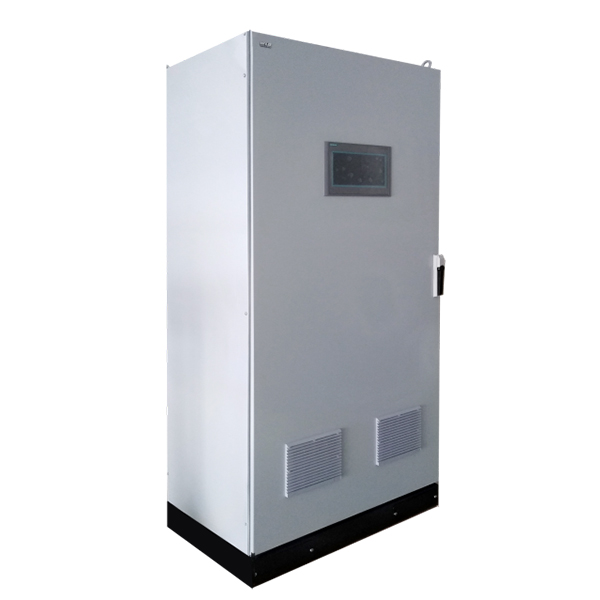PCS (Power Conversion System)
Energy storage converter, also known as two-way energy storage inverter, English name PCS (Power Conversion System), used in AC coupled energy storage systems such as grid-connected energy storage and micro-grid energy storage, connecting the battery pack and the grid (or load) between, is a device to achieve two-way conversion of electric energy. It can convert the DC current of the battery into alternating current and send it to the power grid or to the AC load. The alternating current of the power grid can also be rectified into direct current to charge the battery.
- Storage temperature-20℃ ~ 70℃
- Max. Efficiency98.5% @ full-load
- Cabinet dimension440*220*600mm
- Weight40kg
Key Features: Power Conversion Systems (PCS)
- Grid Integration: These systems facilitate seamless integration with the electrical grid, allowing for bidirectional power flow. This enables users to draw power from the grid during low production periods and inject excess energy back into the grid when production exceeds demand.
- Frequency and Voltage Regulation: PCS play a critical role in stabilizing and regulating the frequency and voltage of the electrical output, ensuring a consistent and reliable power supply.
- Energy Management: Advanced PCS has intelligent energy management features, allowing for optimized charging and discharging cycles. This helps maximize the efficiency and lifespan of energy storage systems.
- Grid Support Services: PCS contribute to grid stability by providing ancillary services such as frequency regulation, voltage support, and grid balancing. These capabilities enhance the resilience and reliability of the overall electrical infrastructure.
- Remote Monitoring and Control: Many Power Conversion Systems are equipped with advanced monitoring and control systems that enable remote management, allowing users to monitor performance, adjust settings, and troubleshoot issues without physical presence.
Applications: Power Conversion Systems (PCS)
Power Conversion Systems (PCS) find applications across various sectors and scenarios due to their crucial role in managing and optimizing energy flow. Some notable uses of PCS include:- Renewable Energy Integration: It play a pivotal role in renewable energy systems, such as solar and wind installations. They convert the variable and often intermittent DC power generated by these sources into stable, grid-compatible AC power.
- Energy Storage Systems: In conjunction with energy storage technologies like batteries, PCS manage the charging and discharging cycles. They ensure efficient energy transfer, storage, and retrieval, contributing to energy storage systems' overall effectiveness and reliability.
- Grid Stability and Resilience: It contribute to grid stability by providing ancillary services. They help regulate frequency and voltage, support grid balancing, and enhance the overall resilience of the electrical grid, .
- Electric Vehicles (EVs): PCS are integral to the charging infrastructure in electric transportation. They convert grid power to the appropriate form for charging electric vehicles and ensuring compatibility with different charging standards.
- Microgrids: PCS are essential components in microgrid systems, enabling the seamless integration of distributed energy resources. They help balance power generation and consumption within localized grids, enhancing energy reliability and reducing dependence on centralized power sources.
